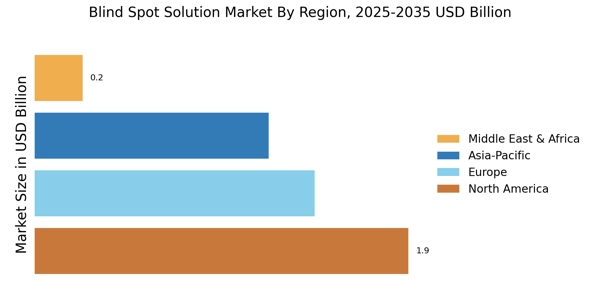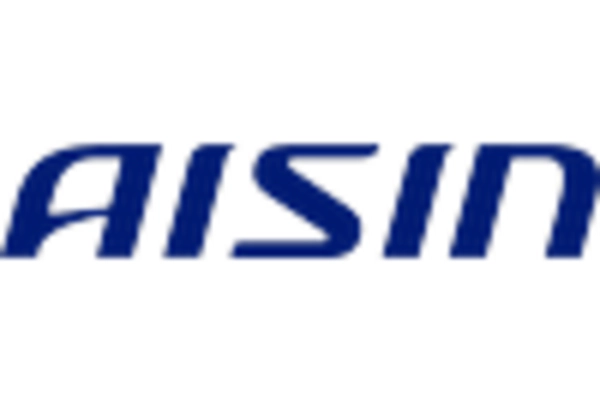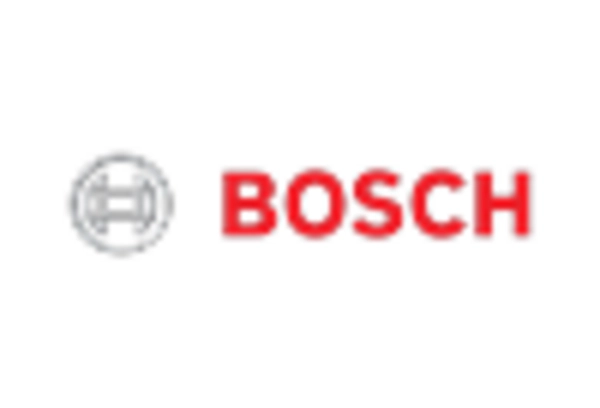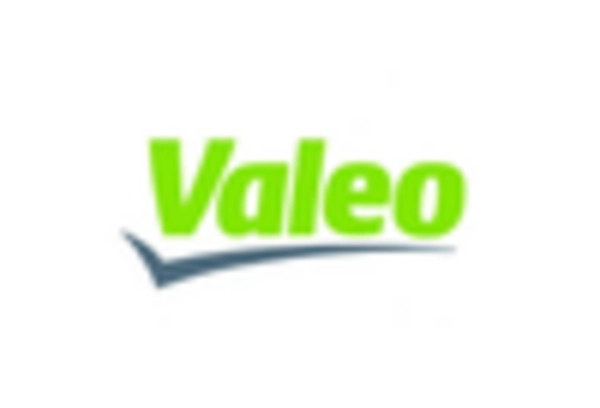Rising Vehicle Production
The increasing production of vehicles is a pivotal driver for the Blind Spot Solution Market. As automotive manufacturers ramp up production to meet consumer demand, the integration of advanced safety features, including blind spot detection systems, becomes essential. In 2025, the automotive sector is projected to produce over 90 million vehicles, a figure that underscores the necessity for enhanced safety technologies. This surge in vehicle production is likely to propel the demand for blind spot solutions, as manufacturers seek to comply with safety regulations and consumer expectations. Consequently, the Blind Spot Solution Market is expected to witness substantial growth, driven by the need for innovative safety features that mitigate the risks associated with blind spots.
Technological Innovations
Technological advancements play a crucial role in shaping the Blind Spot Solution Market. The emergence of sophisticated sensors, cameras, and radar systems has revolutionized the way blind spot detection is implemented in vehicles. In 2025, the market for advanced driver-assistance systems (ADAS) is anticipated to reach approximately 30 billion USD, with blind spot detection systems comprising a significant portion of this growth. These innovations not only enhance the accuracy and reliability of blind spot detection but also contribute to the overall safety of vehicles. As technology continues to evolve, the Blind Spot Solution Market is likely to expand, driven by the demand for cutting-edge solutions that improve driver awareness and reduce accidents.
Increasing Road Safety Regulations
The implementation of stringent road safety regulations is a significant driver for the Blind Spot Solution Market. Governments and regulatory bodies are increasingly mandating the inclusion of advanced safety features in new vehicles to reduce accident rates. In 2025, it is estimated that over 50 countries will have adopted regulations requiring blind spot detection systems in passenger vehicles. This regulatory push not only enhances consumer safety but also compels manufacturers to invest in blind spot solutions. As compliance with these regulations becomes imperative, the Blind Spot Solution Market is poised for growth, as automakers strive to meet the evolving safety standards and consumer expectations.
Consumer Demand for Safety Features
The growing consumer demand for enhanced safety features is a driving force behind the Blind Spot Solution Market. As awareness of road safety issues increases, consumers are actively seeking vehicles equipped with advanced safety technologies, including blind spot detection systems. In 2025, surveys indicate that over 70% of potential car buyers prioritize safety features when making purchasing decisions. This shift in consumer preferences is prompting manufacturers to integrate blind spot solutions into their vehicles to remain competitive. Consequently, the Blind Spot Solution Market is likely to experience robust growth, as automakers respond to the rising demand for safety-oriented technologies that protect drivers and passengers alike.
Integration with Autonomous Driving Technologies
The integration of blind spot solutions with autonomous driving technologies is emerging as a key driver for the Blind Spot Solution Market. As the automotive industry moves towards greater automation, the need for reliable blind spot detection systems becomes increasingly critical. In 2025, the market for autonomous vehicles is projected to reach 50 billion USD, with blind spot detection playing a vital role in ensuring safe navigation. The synergy between blind spot solutions and autonomous driving systems enhances overall vehicle safety and efficiency. As manufacturers invest in these technologies, the Blind Spot Solution Market is expected to grow, driven by the demand for seamless integration of safety features in the evolving landscape of autonomous vehicles.


















Leave a Comment